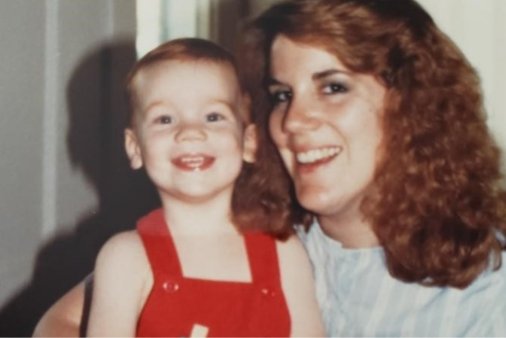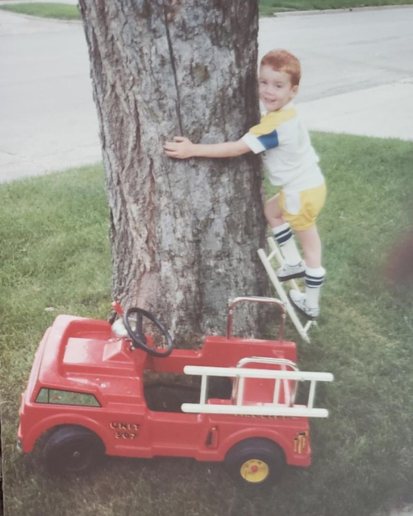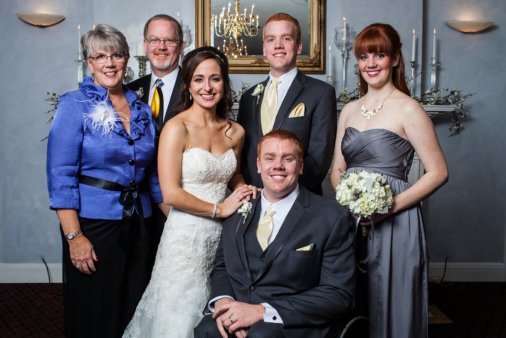As an adult living with Spina Bifida, I often get asked about what advice I can offer to parents who have a child with a disability. My primary answer is to let your kid be a kid — not just a kid with a disability.
All kids need to dream big and experience their own trials and errors. Ultimately, that’s how we all learn, whether we have a disability or not. By overcoming challenges and learning, you can become an active, successful, and happy community member.
Today, I felt it may be best to recruit some help on this topic, so my mom has written an open letter from one parent to another. We all know that each individual and their disability is unique. However, it often helps to hear from someone who has journeyed on this path before to remind you that you’re not alone. With that said, here is the letter from my mom, the mother of a child with a disability.

An Open Letter from a Mother of a Child with a Disability
Dear fellow parent of a child with a disability,
My name is Peggy, and I am a mother of 3 grown children. Our oldest, Brendan, was born with spina bifida. My husband and I learned about his diagnosis while I was still pregnant. We were shocked, confused, and scared as we learned more about this complication, and we wondered what our baby’s future would hold. While at the time, most parents wouldn’t discover their baby’s spina bifida until birth, we felt fortunate to at least know ahead of time. This way, we had time to educate and prepare ourselves.
At the time of Brendan’s delivery by cesarean, we got some good news. His back did not have the usual external opening, his hips were in their proper place, and he wouldn’t require a shunt. His brain and spinal column were handling the spinal fluid well.
So many other questions went unanswered. Will he be able to walk? Will he have developmental delays? How will he do in school? Will the other kids tease him? Will he be able to father his own children someday? All of these worries and answers to our questions would take time to become clear.
However, as a lifelong worrier at that point in my life, the first gift little Brendan gave me was the incentive to let go of all the “what ifs” and simply enjoy my happy, smiling, easy baby boy. Ever since then, I’ve mostly been able to keep an attitude of “Everything will work out as it is meant to.”
How We Raised Our Child with Spina Bifida
Had I attempted to guess how Brendan’s life would play out, I’d never have imagined a life as rich, blessed, and fulfilling as the one Brendan is living. His dad and I worked to make sure Brendan would be as independent as possible. This meant I had to sometimes resist that parental urge to step in and fix them, help too much, or keep him in a bubble. Had he been our last child, I think this would have been harder to do.
Brendan learned how to self-catheterize by the age of 4, and he even began managing his own bowel program in middle school. We highly recommend the ACE or MACE procedure as a great way to gain this independence and avoid accidents.
One activity that I believe helped Brendan do well with his classmates during elementary school was an age-appropriate presentation with his class at the beginning of each school year. We would talk about spina bifida. Then we passed around his ankle braces for others to inspect or try on. Also, we answered any questions the children or the teacher had. I think talking about the differences, like how he walked with a unique gait, helped his classmates better understand and accept Brendan’s differences. Kids see differences, and they make fun of what they don’t learn about. However, Brendan was never teased as he went through elementary school.
By the time multiple schools merged into a middle school, he had a solid core of students who knew him well. He felt the eventual teasing that did come his way was only because “Those kids just don’t understand, Mom.”

Involvement with Adaptive Sports
Brendan loved sports from a very early age, and he enthusiastically played baseball with our local athletic association from kindergarten until 5th grade. That last year, he’d had hip reconstruction surgery and used a wheelchair afterward. The coach called and asked to have Brendan on his team, wheelchair included!
That fall, Brendan saw a wheelchair basketball game, and his sporting path was clear. He quickly moved from a JV basketball team to varsity, where he would call out plays to his high-school-age teammates with his still pipsqueak voice, and they listened! He truly amazed us with his talent on the court, as both his dad and I are far better spectators than we ever were at playing any sports. We like to joke that his ability came from his spina bifida.
Also, Brendan got so many new opportunities through getting involved with adaptive sports. Playing wheelchair basketball had him traveling around the country from about age 12 and around the world as he grew older. We could’ve never foreseen all these opportunities when he was born.
Tips for Encouraging Independence in Your Child
Encouraging Brendan’s independence was always our goal as his parents. He might tell you he hated it when I would say, “Someday, I won’t be there to do this for you, so you need to learn to do it yourself.” However, in college and beyond, he was glad he was completely independent, especially when he saw other young adults with spina bifida or other physical disabilities struggle or even fail to succeed on their own.
Now that Brendan is married and a parent, he leads a successful, independent life. Plus, he very willingly serves as a mentor to others. As his parents, we could not have asked for anything more.
Here are my tips to encourage independence in your child with spina bifida or another disability:
1. Allow your child to try new things, even if it makes you nervous. It instills self-confidence.
2. Be okay with your child’s differences. If you address those differences, others will accept them.
3. Prepare them for independent adulthood by stretching their independence as they grow.
4. Love your child and talk to them, especially regarding their feelings and how they feel about their life.
We wish for healthy and happy outcomes for you and your child as you make your way down the path you’re creating together.
Warmly,
Brendan’s mom, Peggy
